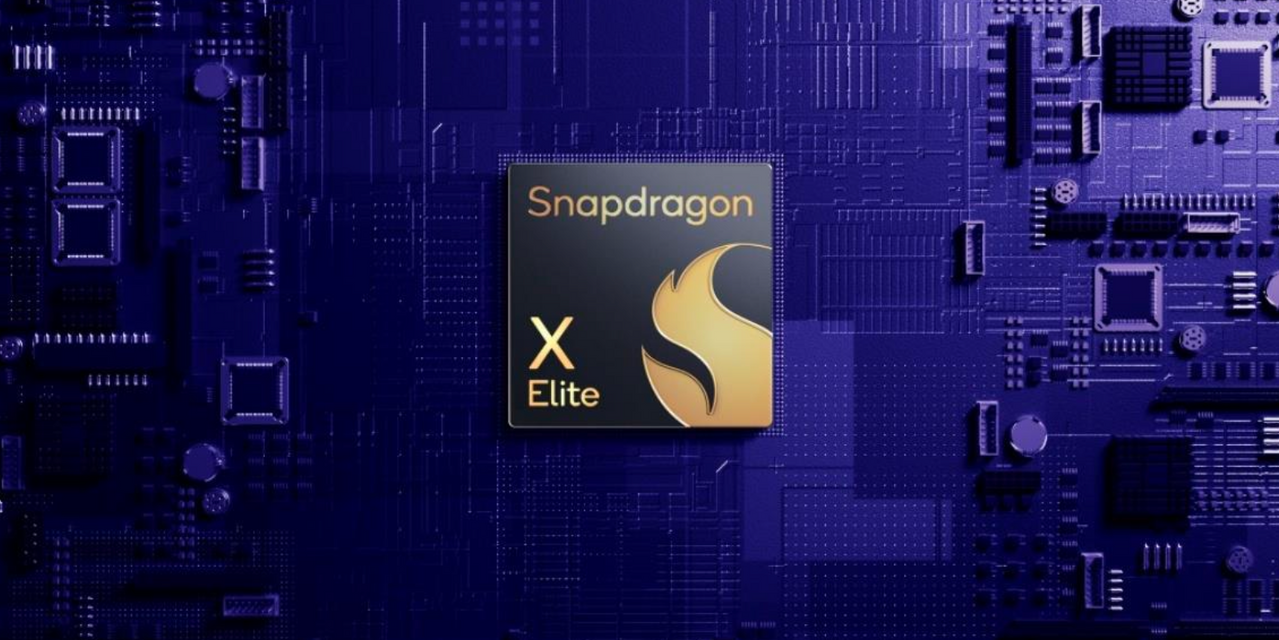“ Qualcomm may have a real competitor to Intel, AMD, and even Apple on its hands. ”
The computer-chip landscape is becoming centered around the idea of client AI, or AI processing that runs locally on a device like a laptop or a smartphone, rather than in the cloud.
Now Qualcomm
QCOM,
has taken the wraps off an interesting combination of products paired with some eye-opening claims — and its rivals should take note. These new products, announced at the company’s annual technology summit, have the capability to shift the balance of power in the PC space.
During the event keynote with CEO Cristiano Amon, Qualcomm unveiled early details of a new chipset for smartphones, a completely redesigned processor for laptops, a software framework for on-device AI, and even a solution for cross-device communication and collaboration meant to compete with Apple’s
AAPL,
intuitive ecosystem advantages.
The new platforms discussed for smartphones and laptops all centered heavily on AI computing, and the need for local processing horsepower to enable it. Qualcomm has dubbed the combination of its CPU cores, graphics IP, and the Hexagon NPU (neural processing unit) as the “Qualcomm AI Engine” in an attempt to demonstrate the value of each computing block on the chip to the overall AI performance narrative.
“Chips are becoming more powerful and using less power.”
The most interesting — and most likely to be disruptive to the status quo — is the chipset announced for laptop PCs called Snapdragon X Elite.
The Snapdragon X Elite is the first product from Qualcomm that integrates the Oryon CPU cores designed by the team acquired through the purchase of Nuvia in 2021. These cores are meant to be high performance, competitive with the best from AMD
AMD,
and Intel
INTC,
while still maintaining the power efficiency of the Arm Holdings
ARM,
designs they are based on. Qualcomm claims that the 12-core X Elite chip will be twice as fast as the Intel processors in the same system classes and using the same amount of power, or can offer the same performance while using 60% less power.
The integrated graphics part of the Snapdragon X Elite also gets a big upgrade. Again, Qualcomm claims an 80%-100% advantage over the best current generation graphics from Intel at the same power or equal performance while using 70% less power.
Qualcomm even has a comparison to the Apple M2 processor, claiming to have basically the same performance in single threaded workloads while using 30% less power.
If these numbers stand, it means Qualcomm may have a real competitor to Intel, AMD, and even Apple on its hands. Qualcomm is making bold claims that will require the validation of independent testing and real-world performance and experience measurement as systems become available in 2024.
AI everywhere, all at once
With the emphasis on running AI on your local devices that will permeate the rest of this year and 2024, Qualcomm was eager to show the new laptop chips capabilities there too, claiming the NPU runs at up to 45 TOPS (trillions of operations per second) of performance. For reference, AMD’s latest Ryzen AI implementation claims 10 TOPS of performance and early indications are Intel’s “Meteor Lake” will be in the same ballpark.
Qualcomm showed AI application demos that included stable diffusion image generation, image expansion (taking an existing photo and having AI expand the area around it automatically) and even a large language model-based AI assistant tool (meant to emulate the capabilities of ChatGPT) all running completely on the local laptop, without the need for the cloud. The demos were impressive, though how these experiences will map to actual end-user experience isn’t known since the software ecosystem for these tools is just getting started in the PC space.
Since Qualcomm first tried to enter the PC chipset space back in 2016, it has demonstrated some interesting benefits versus the entrenched leadership of Intel. Snapdragon laptops had amazing battery life and the best combination of connectivity (Wi-Fi, cellular, Bluetooth) that you could find anywhere. But they suffered from a performance hit caused by using “small” CPUs that weren’t meant for intense Microsoft Windows environments, and because their Arm architecture meant many applications had to run in an emulated, slower state.
Microsoft
MSFT,
has improved the compatibility of Windows with Arm-based chips over the years, and if the Snapdragon X Elite chips are as fast and efficient as Qualcomm is claiming, there would be a real shakeup in the laptop market.
Microsoft, along with OEMs including HP
HPQ,
Lenovo
992,
and Dell Technologies
DELL,
are eager for ways to differentiate their systems from one another and, more importantly, eager to compete with the Apple MacBook line. Any option that is high performance, enables better battery life, and has new capabilities like superior AI acceleration, has the chance to succeed.
Ryan Shrout is the founder and lead analyst at Shrout Research. Follow him on Twitter @ryanshrout. Shrout has provided consulting services to AMD, Qualcomm, Intel, AMD, Arm and others. He owns shares of Intel.
More: Big tech is battling to put AI on your PC, laptop and smartphone
Also read: AI needs a strong code of ethics to keep its dark side from overtaking us
Read the full article here













Leave a Reply